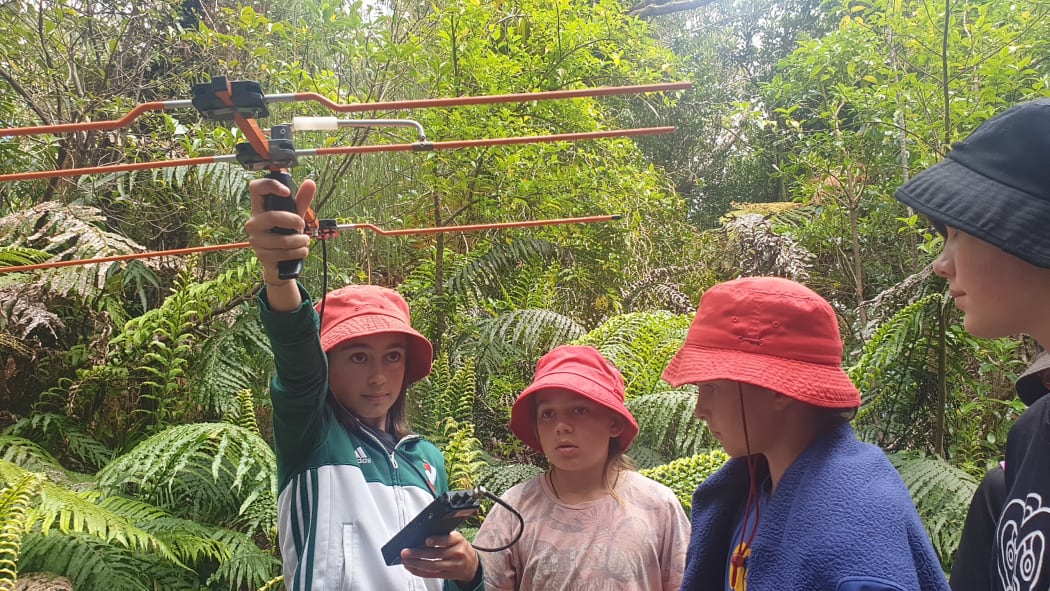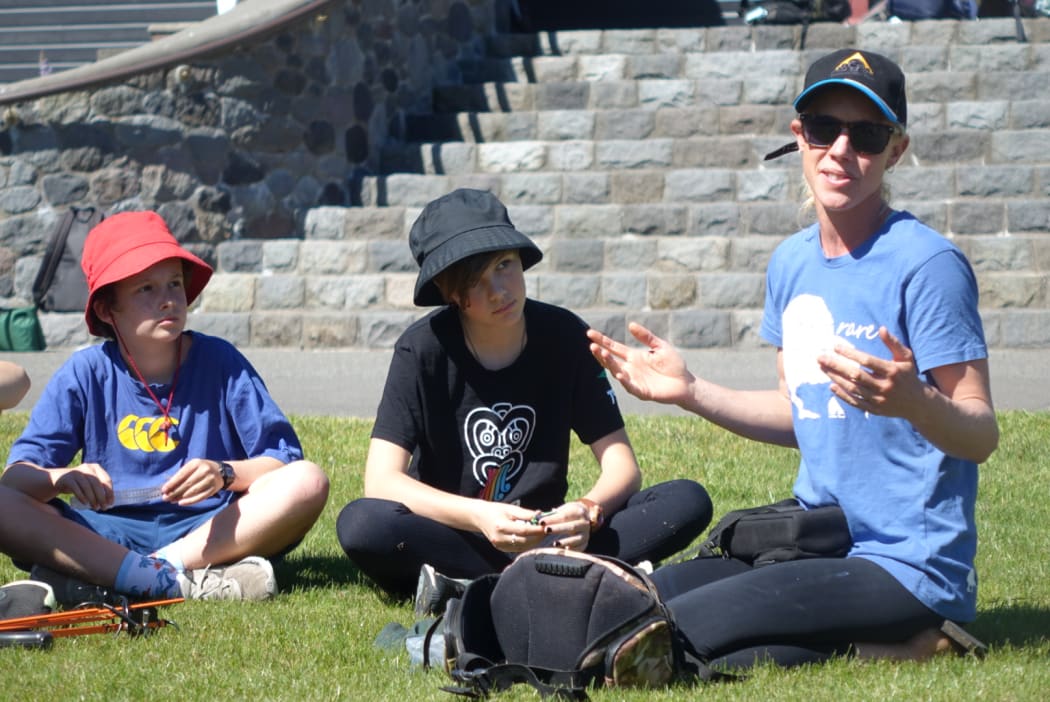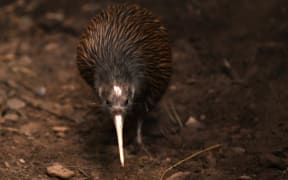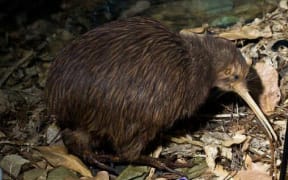A group of Taranaki school children enjoying a crash course in kiwi tracking in Te Papakura o Taranaki (Egmont National Park) have been let in on a secret...

Evelyn Colegate and class mates from Oakura School search for signals to track kiwi's movements Photo: RNZ/ Robin Martin
Five pairs of the national bird released onto Kaitake maunga in April are in the midst of a baby - or should that be - chick boom.
A transmitter carried by Haimona - one of 10 western brown kiwi transferred to the Kaitake ranges from the Rotokare Scenic Reserve earlier this year - is beeping in patterns indecipherable to all but those in the know.
Taranaki Kiwi Trust operations leader Sian Portier is translating the code with the help of children from Oakura School.
"So there's nine and four there ... so minus two from nine is seven [and two from four is two] ... so 72 days he's been sitting. So, like I said 75 is about hatch time so any day now he should hatch out."
Kiwi had been absent from the range for decades. But Haimona is incubating an egg, about to become a dad, and he's not alone.
Portier said the kiwi were wearing a transmitter with a mercury switch which recorded their activity every 10 minutes.
The telemetry codes or beeps provide a wealth of information.
"So those codes will tell us everything from how long a bird has been incubating or if it is incubating what state it's in, down to what time it came out to feed last night and how many hours it was actually out for last night, the night before and an average over the last four nights as well."
Evelyn Colegate of Oakura School had been paying attention.
"We've learnt what the beeps mean. We've learned that 48 means that it's incubating, that it's kind of still and that and it's transmitter may have fallen off or it maybe dead but hopefully not that.
"And I've learned how to use them and how to read the little like monitor how many beeps per minute and things like that."

Taranaki Kiwi Trust's Sian Portier briefs students from Oakura School Photo: RNZ/ Robin Martin
In the case of Haimona, the code shows he got off the egg at about 8pm the night before and fed for about five hours.
But he's been beaten to the punch in producing the first chick on Kaitake - that honour goes to Spencer. His egg hatched just a few days ago. Two other males also are incubating eggs.
Tāne Manu of Te Ara Taiao o Kaitake has been co-ordinating school groups involved with the kaitiakitanga of the kiwi.
"One of the things we really wanted to do was get the tamariki back up on the maunga first and foremost where they released the kiwi and then have them engage in activities that enable that protection such as the telemetry."
Manu said it had been amazing what the tracking had revealed.
"Some of our kiwi have gone tipi haere, they've just gone for a walk around the maunga. Some of them have actually gone as far as Pouakai and then come back. And one of the main reasons we're back up again today is to continue that monitoring."
Taranaki Kiwi Trust's Sian Portier said the release on Kaitake had been fantastic.
"I couldn't have imagined for better really and the fifth male that is not yet incubating has paired up with a female and I think he will start sitting any day as well."
She said it was important to have the young people along for the journey.
"It's really awesome to see the kids getting so into this and showing that science doesn't have to mean wearing white coats in a lab. This is science and there is still so much that we don't know.
"So yeah inspiring them to not necessarily to work with kiwi, but to work in conservation. It's a big thing in New Zealand and the moment, and the more young people we can inspire the better."
One of the messages the children are taking back to their communities is for dog owners to keep their pooches out of the national park.
Kiwi are particularly vulnerable to inquisitive dogs - with as little as a nudge from their snout being potentially fatal.




